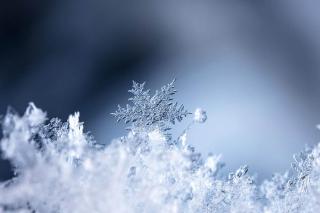February 1st Water Supply Outlook Report for Utah

This is the winter we’ve been waiting for! As of February 1st, the statewide snow water equivalent (SWE) measured at our SNOTEL sites was 171% of normal, with all major basins except the Raft above 150%. With around 60 days to go until our typical peak snowpack in early April, we have already surpassed what a normal peak snowpack would look like in an average year. Our statewide SWE is roughly 109% of our typical peak SWE, which means that Utah is now guaranteed to have an above-normal snowpack season! From now until the onset of snowmelt, every additional amount of snow we receive will push us farther above normal. The only years that have had more snow at the beginning of February since the SNOTEL network was installed were 1984 and 1997. We're in good company! That makes this the best winter that we've seen in more than 25 years—even better than the banner 1983, 2005, and 2011 snow seasons that we often hold up as measuring stick-type winters.
New records for snow water equivalent are being set at Utah’s SNOTEL sites! As of February 1st, three sites (Big Flat SNOTEL near Beaver, Lasal Mountain SNOTEL near Moab, and Vernon Creek SNOTEL near Vernon) were reporting a record high amount of SWE compared with the last 30 years, and 11 more were second highest.
While we are all quite excited about the snowy conditions, please bear in mind that a range of outcomes is still possible for Utah’s snowpack season. From our projections using the range of previous observations, the most probable outcome is that our maximum SWE for this winter will be roughly 150% of normal (averaged across all of Utah’s SNOTEL sites). It’s also possible that this could be our new record winter for SWE in Utah! Conversely, it’s still possible that our storms could start to dry up. If we follow the trace for the worst possible winter observed in Utah from this day forward, we would peak at ~120% of normal SWE in mid-March. Let’s hope that doesn’t happen!
January precipitation in Utah was well above normal at 196%! This brings the water-year-to-date precipitation to 142% of normal. As of February 1st, all of Utah’s major watersheds were above 115% of normal precipitation for the 2023 water year. Statewide soil moisture is at 54% of saturation, compared with 56% last year. Utah’s reservoir storage is currently at 49% of capacity, down 2% from this time last year.
Streamflow forecasts for April to July snowmelt runoff volume are based mainly on observed SWE and precipitation at Utah’s SNOTEL sites, with some consideration given to soil moisture conditions. These forecasts are quite bullish—above normal flow predicted at every forecast point except the Green River—with >200% of normal flow forecast for many locations. However, please recall that as of last year our forecast percent normal values are based on median instead of average. Because of Utah’s arid streamflow hydrology (where the majority of years have low flows but infrequent high flow years also influence the distribution), the switch from average to median resulted in a large number of decreased normals for Utah streams. The lower normal values produce a higher relative “percent of normal” for any given observation. Water and resource managers need to be aware of the impact that these new normals may have on the public’s understanding of our water supply conditions. Additional details about the transition to the new normals can be found here.
The Utah Snow Survey (NRCS) has recently been working with the Colorado Basin River Forecast Center (NOAA) on a new Forecast Comparison page. This is intended to be a one-stop landing page for water managers to find snowmelt runoff forecasts from both agencies for any location in Utah and compare the values. Water users can also assess differences in forecasts relative to ‘percent of average’ versus ‘percent of median’ to help alleviate the potential issues described in the previous paragraph. In general, there is excellent agreement between the forecasts from both agencies. Differences in forecast methodology are bound to produce differences in published forecast values between the two agencies, though these discrepancies are typically minor in the context of the overall forecast uncertainty. The page is now live and available to all interested parties. Many thanks to the CBRFC for spearheading this effort and for being great collaborators!
Surface Water Supply Indices (SWSI) for Utah basins combine our current reservoir levels with the additional volume of water anticipated for each watershed based on these February 1 streamflow forecasts. Some areas of the state with significant ground to make up (due to large amounts of depleted reservoir storage) continue to have low SWSI values, such as the Provo River basin. Other areas have much higher SWSI values, such as the Smith Fork, Moab, Price, Beaver, and Virgin River watersheds, which are all above the 75th percentile. These high SWSI values suggest that those basins will have favorable amounts of surface water supplies compared with previous observations going back to the early 1980s.

